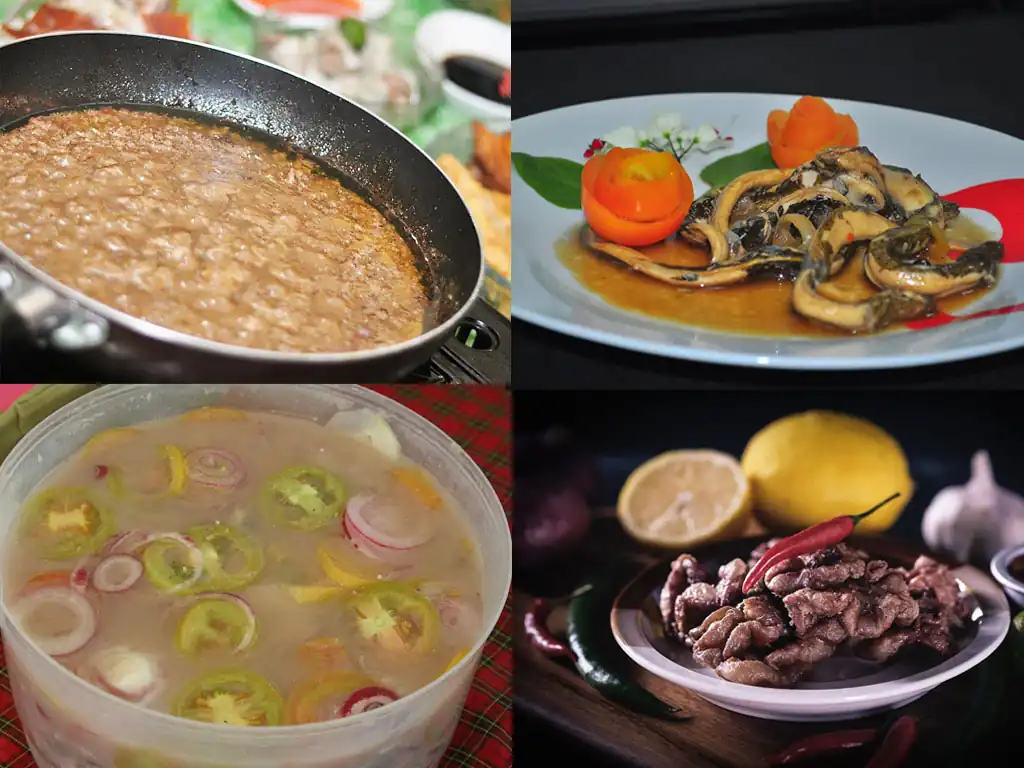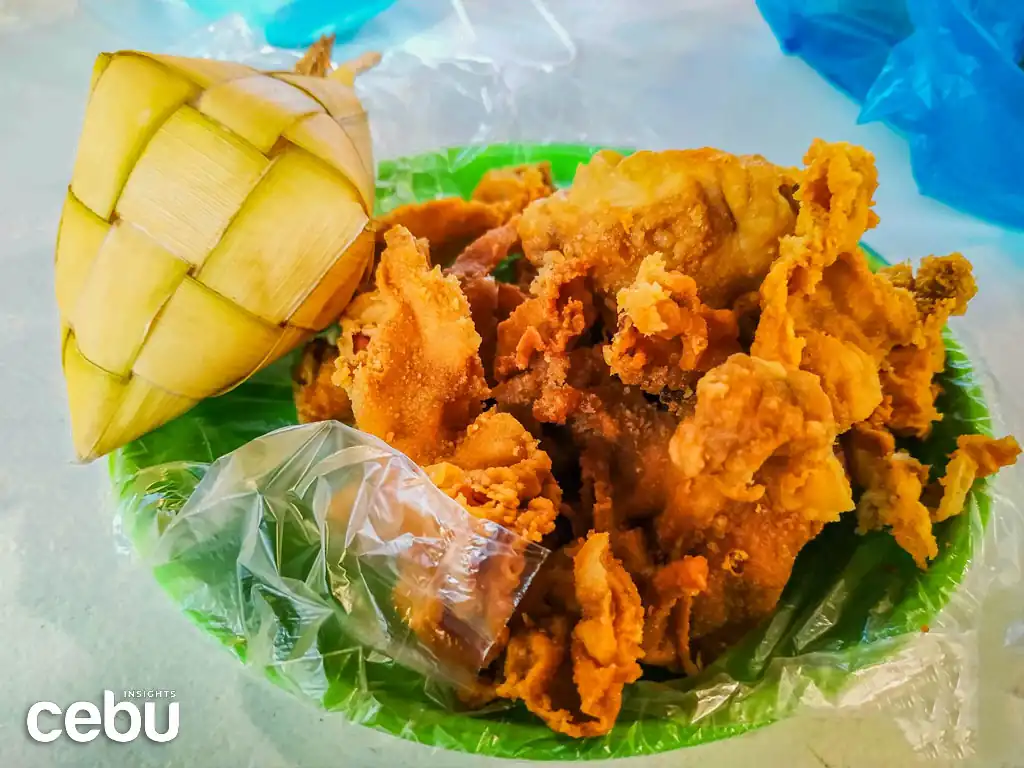Imagine yourself dining out at the Queen City of the South. What is the first dish you picture yourself eating? No doubt, you would quickly think of a scrumptious slice of Cebu lechon. While it is arguably the most well-known dish in the city, there’s more to Cebu than just lechon (roasted suckling pig). The city also has its fair share of exotic meals.
You might be intimidated in trying some of these dishes, but if you give them a try, you might just be surprised by how tasty they are. Their appearance may not always look inviting, but the taste cannot be compared. What a perfect excuse to try authentic Cebuano dishes. Here are some Cebu exotic dishes that you ought to try when you travel to Cebu:
THE MOST POPULAR CEBU EXOTIC DISHES
Ginabot
Taste the crispy goodness of ginabot.
One interesting aspect of Cebu food culture is the fascination with fried food, so much so that Cebuanos deep fry even pig entrails. Ginabot (also known as chicharon bulaklak in other parts of the country) is deep-fried pork intestines.
These innards are thoroughly cleaned before being fried. What makes the ginabot a delight to eat is the outer tissue that curls and crisps up rather nicely.
Dip that with a sauce consisting of soy sauce, white vinegar, diced white onion, and aji peppers and you get the perfect main dish for your meal or an appetizer while you’re out drinking.
Cebuanos are so fond of this dish that there are stalls that only serve ginabot, which are collectively called pungko-pungko. In Bisaya, pungko means squat. Because most of these stalls have low benches, the people who eat there look like they’re squatting. So if you’re wondering where are some of the best places to eat in Cebu, better stop by the nearest pungko-pungko to taste some authentic ginabot.
Larang
Sip some hot larang soup on a cold day.
If you have an adventurous palate, then you have to try the seafood in Cebu. Because the island is surrounded by water, locals have developed a hankering for seafood. They aren’t particularly picky either. For this reason, larang is one of the most flexible dishes you can ever try here.
Larang is basically a seafood stew, but what makes it different from tinuwa is it uses more tomatoes, spices, and type of fish stewed. Most larang places either use molmol (parrotfish) or bakasi (eel). But if you go to the biggest Cebu seafood market (which is found in Pasil) and look hard enough, there are larang stalls that use stingrays and even sharks.
If you think Pasil is far enough, not to worry because more and more barangays have their own larang stalls. Some of them only operate at night while others open 24/7. As long as you ask around, you should find one nearby.
Cebuanos consider the perfect dish for cold weather or curing hangovers. So after you’ve had a wild night out, perhaps the help of this hearty soup is all you need to perk up.
Tuslob Buwa
Try the frothy, savory goodness of tuslob buwa.
A benchmark of Cebuano cooking is combining ingredients that people normally find unappealing and make something savory out of them. Tuslob buwa is a perfect example of this ingeniousness.
Pork liver and brains are thrown in a wok together with garlic, onions, shrimp paste, and chilis and sauteed until they reach a frothy (the buwa) consistency. At this point, you dip (tuslob) your pusô (hanging rice) and eat to your heart’s content.
Before, you can only find tuslob buwa stalls in Pasil. But recently, more and more vendors have popped up in other barangays. There are even some high-end restaurants that are now including this in their menus.
Ideally, this gravy mixture is best eaten with friends, so make sure to bring a couple of your buddies with you and head to Pasil. But if you prefer a portion all to yourself, your best chance is to order from a restaurant that serves Cebu exotic dishes.
Either way, after a taste of this frothy gravy concoction, you’d see pork liver and brains in a whole new light.
Bakasi
Try some authentic bakasi in Cordova.
The seaside town of Cordova is renowned for serving reef eel soup. Entoy’s Bakasihan is a favorite hotspot among the locals. Their bakasi (reef eel) is so good that it was even featured in a Netflix documentary, Street Food: Asia.
It’s no surprise that eel is a delicacy in Cordova since there are so many swimming in its waters. What makes this particular fish perfect for stew is the fact that its meat is soft enough to melt in your mouth but firm enough that it doesn’t break apart while being cooked. The only caveat is that it can taste a little bland, but if you cook it long enough with the spices, the flavors seep through nicely.
All in all, your trip to Cordova would be worth it once you get a taste of this rustic stew.
Dayok
Pair your favorite meal with dayok.
Since Cebuanos are not picky eaters, not only are they willing to try any type of meat or fish, but they also don’t waste any parts—including the internal organs. It’s no surprise they came up with a condiment as unique as dayok, which is fermented fish intestines.
As disgusting as this sounds, the taste is actually very similar to patis (fish sauce) but with a more pasty texture. You can eat it on its own (in fact, it’s a rather popular appetizer), but you can also mix it in as an ingredient for other dishes. Because of its spiciness, it adds extra heat to the dish.
You can find bottles of dayok sold in public and farmer’s markets in the city. You can even find it in select supermarkets. Truly, this appetizer is one of the more unique and exotic components of Cebuano cuisine.
These Cebu exotic dishes are also a reflection of Cebu culture. When you are in Cebu, you hardly run out of things to try and experience. But a good way to discover what the Queen City of the South has to offer is to embark on a Cebu food trip and try these culinary delights.











